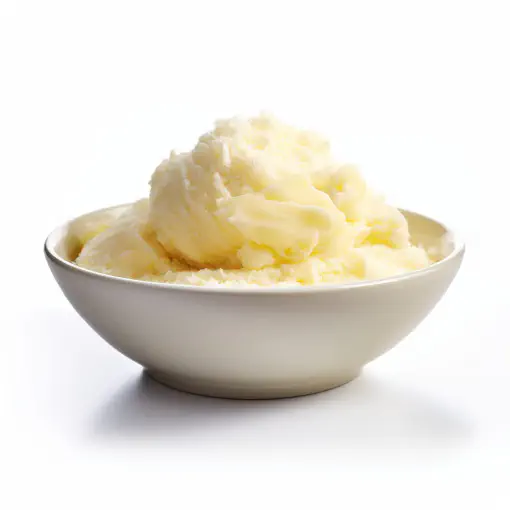Palm shortenings are derived from palm oil and are commonly used as an alternative to traditional solid fats like butter or lard. Here are some physical features of palm shortenings:
Characteristics
-
Texture:
Palm shortenings typically have a semi-solid to solid texture at room temperature. They have a creamy, smooth consistency that can easily be spread or used as a solid fat in baking and cooking.
-
Melting Point:
The melting point of palm shortenings can vary depending on the specific product and processing methods. However, they generally have a melting point in the range of 35 to 40 degrees Celsius (95 to 104 degrees Fahrenheit).
-
Appearance:
Palm shortenings are usually off-white or pale yellow in color. The color may vary slightly depending on the refining process and any added ingredients or stabilizers.
-
Flavor and Odor:
Palm shortenings have a neutral flavor, allowing them to complement various recipes without imparting an overpowering taste. They also typically have a mild, neutral odor.
-
Solid Fat Content:
Palm shortenings are high in saturated fats, which gives them their solid form at room temperature. They usually contain a significant amount of solid fat compared to liquid oils.
-
Stability:
Palm shortenings have a high smoke point and are known for their stability at high cooking temperatures. They can withstand frying and baking without breaking down or smoking easily.
-
Shelf Life:
Due to their natural composition and high antioxidant content, palm shortenings have a relatively long shelf life. When stored properly in a cool, dry place, they can typically be kept for several months or even longer.
These physical features make palm shortenings popular ingredients for baked goods, frying, and other applications where a solid fat is needed.
Applications
Palm shortenings, derived from palm oil, are commonly used in various industrial applications. Here are some of the industrial applications of palm shortenings:
-
Food Manufacturing:
Palm shortenings are widely utilized in the food manufacturing industry. They are used as an ingredient in the production of baked goods, such as bread, pastries, cookies, and cakes. Palm shortenings provide a smooth texture, enhance the shelf life of products, and contribute to the desired structure and mouthfeel.
-
Confectionery:
Palm shortenings are used in the confectionery industry for making chocolates, candies, and other sweet treats. They help provide a stable fat base, improve texture, and contribute to the overall sensory characteristics of the confections.
-
Deep Frying:
Palm shortenings are often used in industrial deep frying applications, particularly in the fast-food industry. Their stable composition and high smoke point make them suitable for repeated use in fryers, enabling consistent frying performance and product quality.
-
Margarine and Spreads:
Palm shortenings are a common ingredient in the manufacturing of margarine and spreads. They provide the necessary solidity, stability, and texture to these products, making them spreadable and desirable for use as a butter substitute.
-
Food Service and Catering:
Palm shortenings are used in the food service and catering industry for a variety of applications. They are employed in baking, cooking, and frying processes, providing convenience and versatility in large-scale food preparation.
-
Soap and Cosmetics:
Palm shortenings are utilized in the manufacture of soaps, detergents, and cosmetics. They contribute to the viscosity, conditioning, and lathering properties of these products.
-
Animal Feed:
In the animal feed industry, palm shortenings can be used as a source of energy and fat in animal feed formulations.
